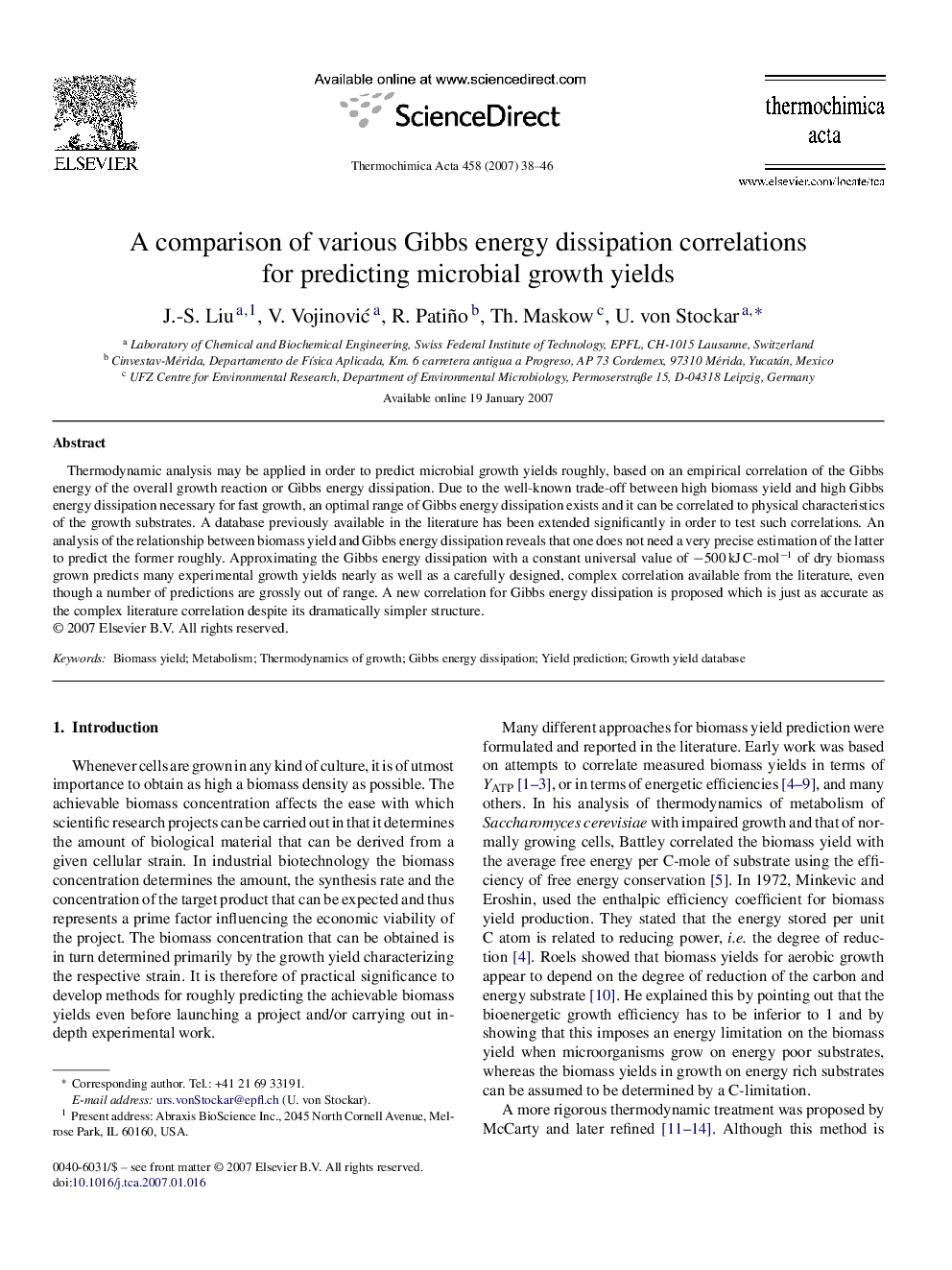| Article ID | Journal | Published Year | Pages | File Type |
|---|---|---|---|---|
| 675641 | Thermochimica Acta | 2007 | 9 Pages |
Thermodynamic analysis may be applied in order to predict microbial growth yields roughly, based on an empirical correlation of the Gibbs energy of the overall growth reaction or Gibbs energy dissipation. Due to the well-known trade-off between high biomass yield and high Gibbs energy dissipation necessary for fast growth, an optimal range of Gibbs energy dissipation exists and it can be correlated to physical characteristics of the growth substrates. A database previously available in the literature has been extended significantly in order to test such correlations. An analysis of the relationship between biomass yield and Gibbs energy dissipation reveals that one does not need a very precise estimation of the latter to predict the former roughly. Approximating the Gibbs energy dissipation with a constant universal value of −500 kJ C-mol−1 of dry biomass grown predicts many experimental growth yields nearly as well as a carefully designed, complex correlation available from the literature, even though a number of predictions are grossly out of range. A new correlation for Gibbs energy dissipation is proposed which is just as accurate as the complex literature correlation despite its dramatically simpler structure.
